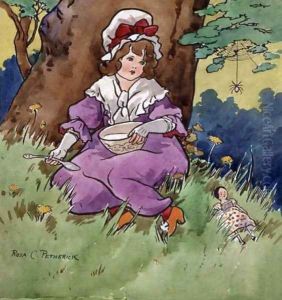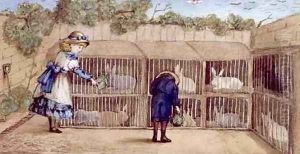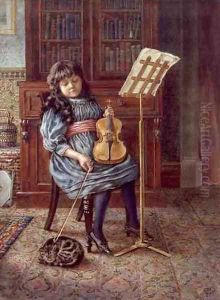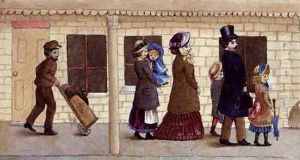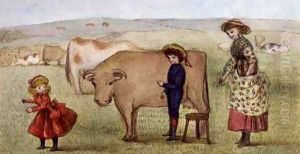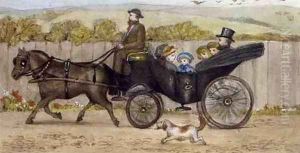Rosa Petherick Paintings
Rosa Petherick was a British illustrator known primarily for her works depicting children and fairies, which were popular during the late Victorian and early Edwardian eras. Though not as widely recognized as some of her contemporaries, Petherick's work reflects the period's interest in the fantastical and the innocent world of childhood.
Rosa Petherick was born in 1872 in London, England. Little is publicly known about her early life and training, which is not uncommon for women artists of the period, whose contributions were often overshadowed by their male counterparts. However, it is evident that Petherick developed a distinctive style that resonated with the tastes of her time.
Her career as an illustrator gained momentum in the early 20th century. Petherick's illustrations appeared in various children's books and periodicals. She worked for publishers such as Blackie and Son and Cassell and Company, contributing to the visual culture that defined children's literature in that era.
Characteristic of her work are delicate lines and a soft palette, capturing the whimsy and innocence of childhood. She often depicted scenes of children engaged in play, fairy tales, and interactions with nature and animals. These themes were particularly popular among the middle and upper classes in England during a period when there was a growing nostalgia for the countryside and a romanticized view of childhood.
Despite the appeal of her illustrations during her lifetime, Rosa Petherick's work, like that of many women artists of her time, did not maintain a high profile in the art historical canon. She passed away in 1931, at a time when the tastes in art and illustration were changing rapidly with the advent of modernism and new artistic movements that did not favor the sentimental style of the Edwardian period.
Today, Rosa Petherick's illustrations are of interest to collectors and scholars who study the art and culture of the late 19th and early 20th centuries. Her work is a testament to the era's aesthetics and societal values, particularly regarding childhood and the natural world. While she may not be a household name, Petherick's contributions continue to offer insights into the visual language of her time and the role of female illustrators in the history of art.

